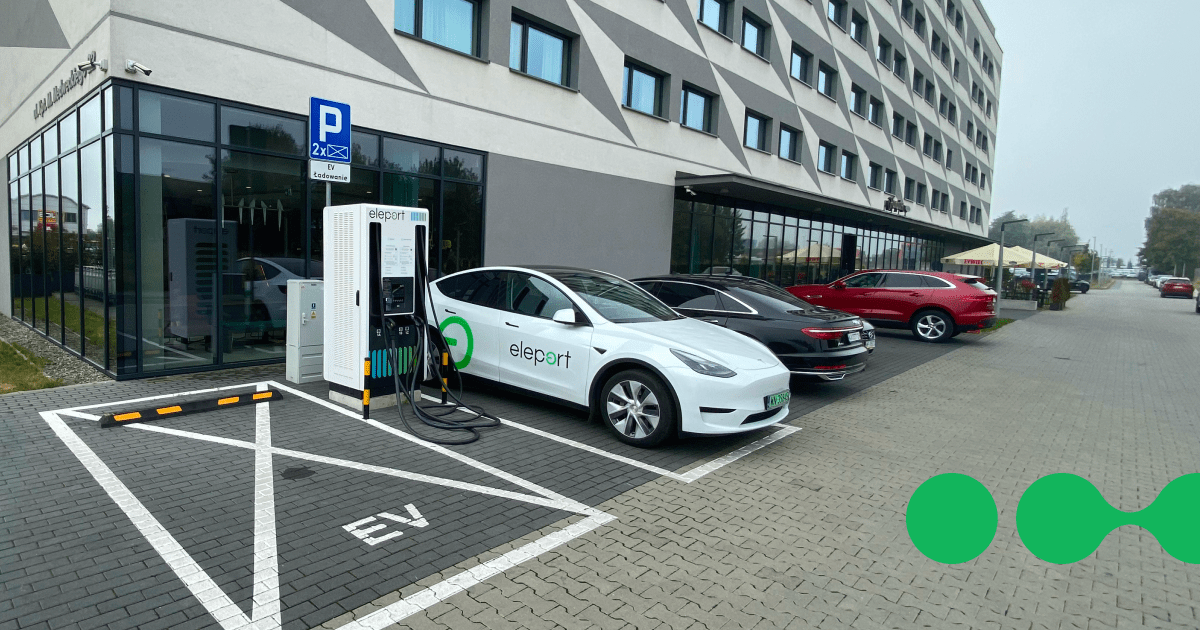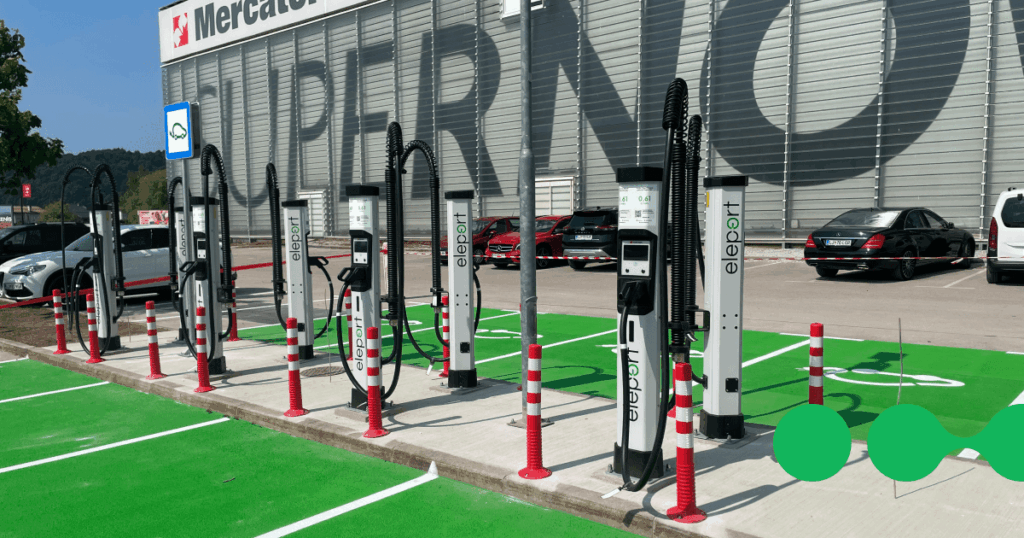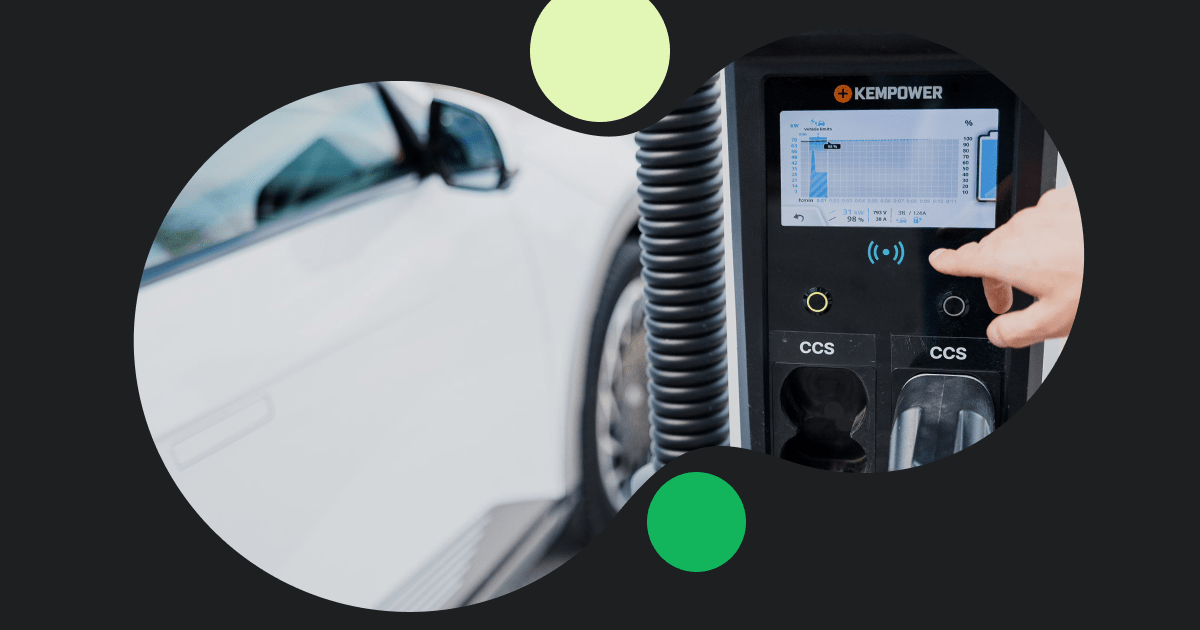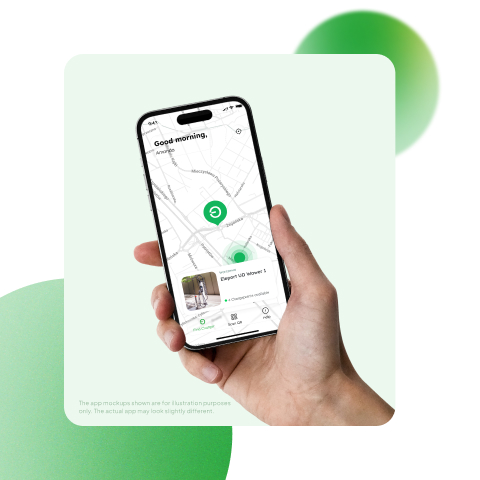If you have ever had a charging network confuse you with different terms and pricing for what is seemingly nothing but your usual EV fast charging, we’ve got you.
The truth is, nearly all charging networks in Europe that have some higher-powered chargers in their networks have chosen to create two tiers in pricing, depending on the power their chargers deliver. So does Eleport, noticeable on our EV charging guide, with different tariffs for 50 kW and under, and the one from 50 kW up to 400 kW+
Slow charging, fast charging, rapid charging, ultra-fast charging, megawatt charging, high-power charging… whichever term you encounter, after this article, you can be sure to know what it means for you and your EV fast charging experience.
Slow Charging (AC)

The AC (short for Alternating Current) charging is what you would use at home or work. The electricity flows from the grid to your car, where the vehicle’s onboard converter transforms it into DC (Direct Current), which is suitable for your battery.
Most onboard chargers handle from 3.7 kW to 11 kW, with the latter being most common nowadays, up to even 22 kW, which is a bit rarer.
This “slow charging” can be done at lower power with a mobile connector, which connects straight to a wall socket and usually comes with your car, and for higher power, you’d need to install a wall charger.
In some cases, the 11-22kW chargers are also called “semi-fast” chargers, and if charging in a retail location, can also be called “destination charging”.
These chargers are often deployed in locations with longer dwell times, be it a home, an office building, a hotel, or a retail location.
Fast Charging (DC)

This type of charging, which requires a fast charger, skips the converter in your car. The charger itself converts AC to DC and sends the power directly to the battery. That’s why DC chargers can deliver 50 kW, 150 kW, or even 350 kW and more.
Fast Charging is considered the charging between 50 kW and 150 kW.
What is Rapid Charging? Well, that’s just exactly the same as EV fast charging, with the word rapid used mostly in the UK and trickling a bit outwards in the industry as well.
The reason for the distinction between “fast” and “ultra-fast” actually stems from the recent history of technology advancements in EV fast charging and electric vehicles.
About a decade ago, when the modern era of EVs started, a 50 kW charger was considered really advanced and, really, a fast charger. These chargers started allowing the early EVs to travel between cities. And they’re still around, but just… less for motorway driving and more for specific urban use cases.
The technology has since advanced significantly. First, it reached the 100-150 kW range, which is still considered under the EV fast charging term, and as time has gone by, we’ve arrived at the:
Ultra-Fast Charging

Ultra-fast EV charging is generally considered to start from 150 kW, although the most common ultra-fast chargers today are rated at 300 to 350 kW. For example, the four ultra-fast charging hubs that Eleport recently launched in Croatia have 24 fast-charging points that deliver up to 300kW each.
Mind you, the pricing schemes can differ, and some EV fast charging networks have decided to price anything over 50kW with a premium, and some start it at 150 kW.
The ability to charge at an ultra-fast charger depends on the vehicle manufacturer, as to which battery technology it has opted for.
The electrical architecture of an EV is largely either 400V (most common until now) or 800V+ architecture, which also determines the possibility of faster charging, because higher voltage enables faster charging speeds at compatible charging stations, reducing charging time considerably. In other words, the 800V+ fast charging EV cars are the ones likely to achieve those ~350kW peak charging rates. The latest technological advancements push these numbers even higher.
The latest charging innovations, mostly from the Chinese EV industry, have made even 640kW chargers and such a not-so-rare sight on that side of the world. In Europe, especially in Central and Eastern Europe, seeing anything past 400 kW is still a very, very rare sight.
For the CCS2 standard, which is dominating in Europe, one of the key suppliers of the charging plugs just recently announced a new form of it, which can handle up to 1 megawatt charging thanks to a liquid-cooled solution.
High-Powered Charging (HPC)
While this seems to be yet another tier to consider, High-Powered Charging is actually just another term for Ultra-Fast EV Charging. So we’re talking about the 150 kW to 350 kW and beyond. The usage of the two naming schemes mostly depends on the region.
And last but not least…
Megawatt Charging
Has charging really reached Megawatt levels? Yes, the chargers can also reach the megawatt level today, and although this has been a topic exclusively for charging heavy-duty vehicles such as electric long-haul trucks, the latest innovations from CATL, the battery maker, and BYD, the vertically integrated battery and automaker, have both pushed the limits of passenger car charging past a megawatt as well.
It used to be a question of “what to do while charging my EV and waiting?”. Now, the question at times can instead be “how do I run my errands fast enough while charging to be here before my battery is full?” We have recently explored how it really only takes 30 seconds to charge your car.
To Recap, All The Charging Types
Below is a concise reference table showing the three charger categories that cover virtually the entire public network in the European Union.
| Charger class | Representative power (kW) | Dominant connector | Typical charge time to add 100 km* | Common locations |
| Mobile charging connector | 2.3 – 3.3 kW; AC | Type 2 | ≈ 6 to 9 hours | At home without a wall charger or when visiting |
| AC charging unit, also called home charger, wall charger | Up to 22 kW, but usually 3-11 kW at homes; AC | Type 2 | ≈ 1h to 1 h 50 min | Home charging as a wall charger, parking lots, and workplaces. |
| Fast charging, also called Rapid charging | 50 – 149 kW; DC | CCS2 / CHAdeMO (phased out) | ≈ 8min to 24 min | Urban EV fast charging, retail locations like shops. |
| Ultra-Fast EV ChargingAlso: High-Power Charging (HPC) | ≥ 150 kW, nowadays often 350kW or more; DC | CCS2 (liquid-cooled) | ≈ 8 min, 4min, or less | Motorway corridors, EV charging hubs, most new sites. |
| Megawatt charging | ≥ 1 MW, nowadays possible for both trucks and a few passenger EVs | MCS, CCS2, GB/T | ~1.2 min | E-trucks, e-buses, on rare occasions also passenger EVs |
* assuming an average of 20 kWh / 100 km efficiency.
Why The Power Number You See Might Not Be The Power You Get
Don’t let yourself be fooled by the flashy high kW number on the charger. There are a few things you should consider before choosing one of the ultra-fast stations:
- Does my EV even take the full power in? Even though the charger might say “350 kW” on top of it, and actually be able to deliver it if needed, you might still not get this into your EV. Because a lot of EVs out there, especially the earlier generation ones, are capped at a maximum charging speed. For some vehicles, it is 100 kW; for most Teslas, for example, it is 250 kW. Basically, you’ll need a modern ultra-fast charging EV to reap the full benefits.
- The charging curve. If your EV is able to take it, the charge curve still plays a role. The peak rate of your battery charge will be sustained only for a limited amount of time based on the state of charge. And after about 80% of the battery is charged, all passenger EVs start to fill up more slowly
- How long do I plan to stay in this spot? If you plan to do something at the location you charge at, be it a retail shop or gym, or something else, consider whether you actually need to charge at such a high power. If you have time, you can benefit from the lower per-kWh price from a less-powerful charger, which ends up getting you to the battery charge still.
- Do I want to save money? With very little exception, the less-powered chargers are cheaper to use per kWh, and thus can save you a little.
- Can I precondition my battery? One of the ways to ensure you are pulling the maximum power that the charger can put out for you is to precondition your EV’s battery, essentially to be ready to take in the charge. In colder areas and times, this usually means warming the battery up.
- Am I sure I won’t damage the battery? Although the answer is nearly always a ‘no, you won’t damage it’, as EVs are designed to handle frequent DC charging, doing only ultra-fast EV charging sessions every day, especially in very warm weather, can, over time, add to the regular degradation of your battery. We’ve covered this in more detail in our related article: Should I charge my EV to 100%?
Now You Know
There are a number of different types of EV fast charging – and also different names for the same type – that can lead to some confusion among the EV drivers. Hopefully, this guide gave you an idea of what to look out for to maximize your experience and save you some hassle.
You can find Eleport’s ultra-fast chargers deployed in Central and Eastern European countries such as Estonia, Latvia, Lithuania, Poland, Slovenia, and Croatia.



